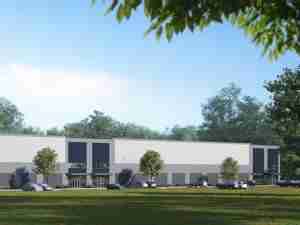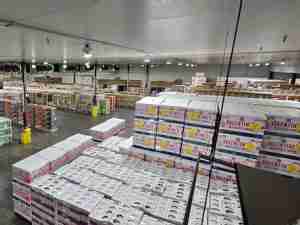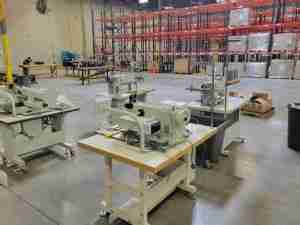Recent trends in construction and development in the St. Louis region show that bulk distribution buildings (over 250,000 square feet) is a growing sector for the regional inventory. Since 2014, more than 18 million square feet of new industrial space has been constructed or is currently under construction in the St. Louis region, and more than 50% of that represents buildings of that significant size.
This surge in construction of large distribution buildings has been evenly split between speculative developments and build-to-suit projects for occupiers. In addition, over the past five years, 85% of all construction and 70% of the new major industrial parks have been focused on the North I-270 Corridor, which is a major logistics corridor for local and national manufacturers, suppliers and distributors and reinforces the vital link between Missouri and Illinois.
“The St. Louis region’s central location in the U.S. and its logistics capabilities has made the metro area a coveted destination for industrial users,” said Katie Haywood, Vice President on the Industrial & Logistics, Advisory & Transaction team at CBRE. “As consumers demand faster shipping times, the St. Louis region becomes very attractive to e-commerce users. In the past 24 months, e-commerce users and 3PLs have leased massive amounts of space. Not to mention existing companies expanding in the area, such as World Wide Technology, Medline and FedEx. Vacancy continues to hover around record lows. The St. Louis region is expected to deliver over 5.5 million square feet of new inventory in 2019, with more than 50% of that inventory being spec construction, a good sign that developers are not seeing a slow-down in demand.”
The St. Louis region boasts triple net lease (NNN) rates of $3.75 per square feet (PSF) for the bulk distribution market, which is lower than the average rate of similarly sized Midwestern cities, including Kansas City, Louisville and Nashville. The region also has 90,000 workers employed in all transportation/material moving occupations, significantly more than Kansas City or Louisville. When looking at all production occupations, the St. Louis region also has a larger workforce than both competing cities.
“Availability of space and speed of delivery; an available, job-ready workforce, and exceptional freight assets are the top three drivers of the growth we’re seeing in our region according to private industry representatives with first-hand knowledge of the bi-state St. Louis area,” notes Mary Lamie, Executive Vice President of Multi Modal Enterprises for Bi-State Development. “There’s an overwhelming amount of data that helps to illustrate the historic growth trend we’re in the midst of, and that’s what prompted us to develop our latest report.”
To help organize all the data and information, the St. Louis Regional Freightway just released the St. Louis Regional Real Estate Market Indicators & Workforce Statistics report.
This report not only draws attention to the region’s construction and development trends and its labor market - especially as relates to transportation and production occupations - it also highlights the wealth of national developers and institutional grade investors active in the market.
A final purpose of the report is to serve as a resource to highlight the St. Louis region’s competitive advantages in the world of freight and distribution. These include logistical advantages such as being home to America’s third largest inland port, four interstates with national access, five airports with capacity and six Class I railroads. Other advantages that can be leveraged by new companies choosing to locate in the region include ample utility capacity and the presence of specialized industry, including international companies that are leaders in aerospace, agriculture, metal manufacturing and recycling, logistics, chemical manufacturing and the automotive industry.
"Although not as robust as 2018, industrial activity in the St. Louis region remains steady and is out-performing forecasts from early 2019,” said Geoff Orf, Senior Vice President, Colliers International. “With a number of large speculative projects recently completed or currently under construction, the industrial market in the St. Louis region is poised to provide multiple options for new large industrial users."









